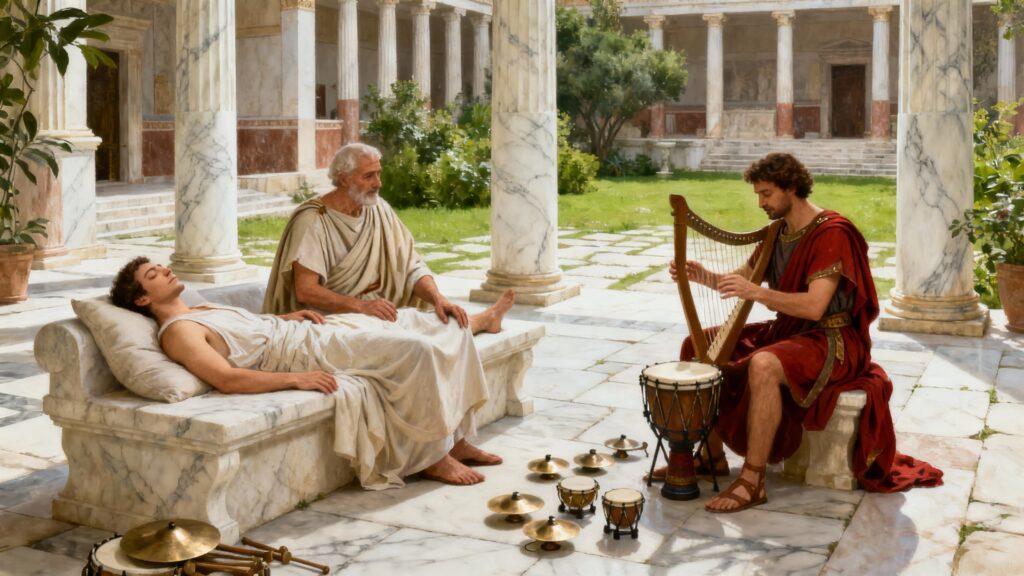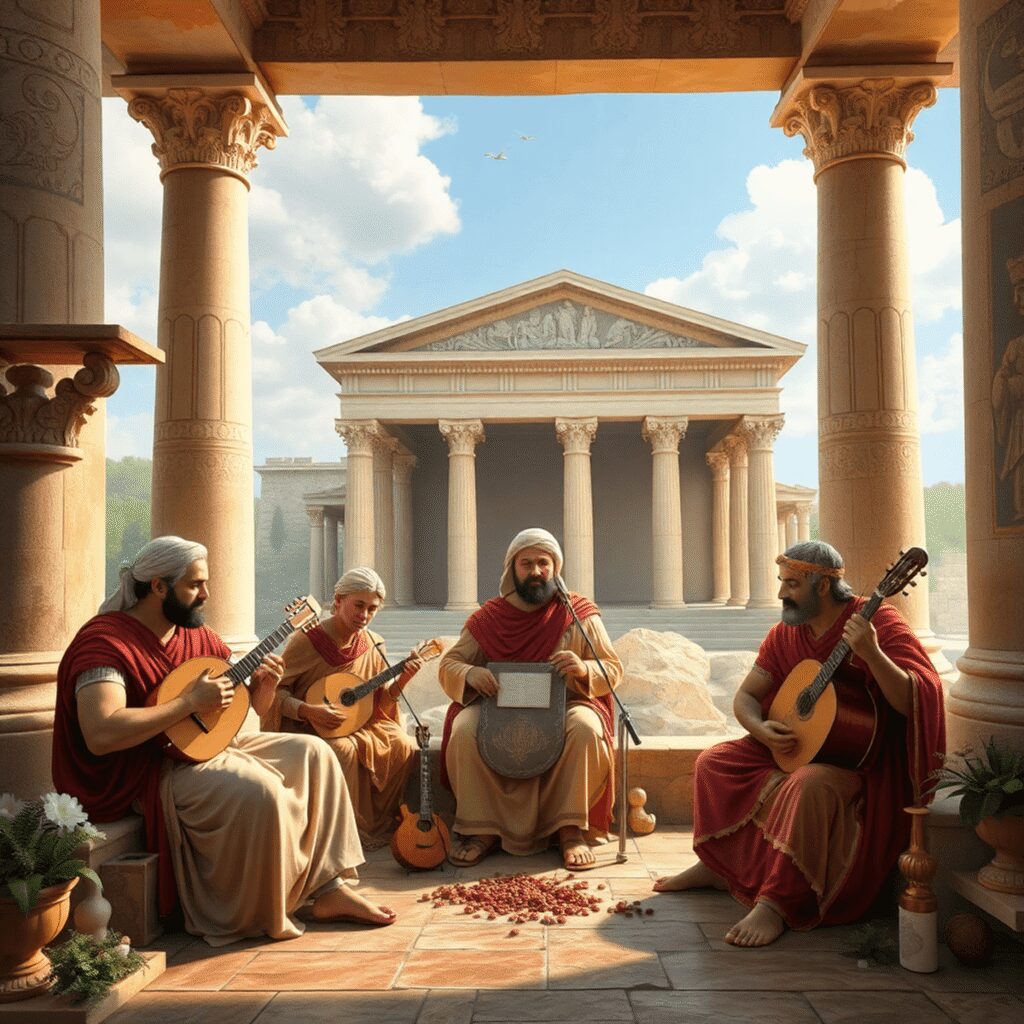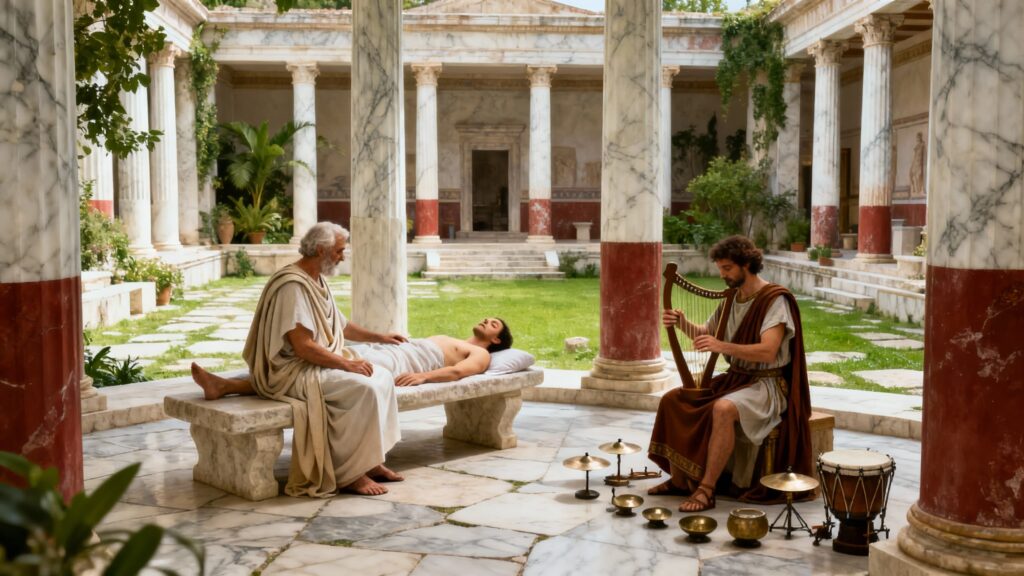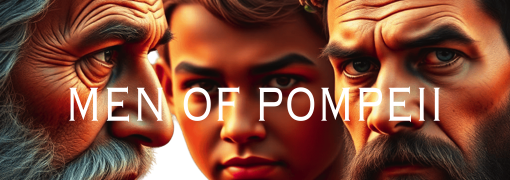Exploring the Role of Music Therapy in Ancient Roman Healing Practices reveals a fascinating intersection of art, medicine, and spirituality. Music therapy, as a healing practice, uses sound and rhythm to influence physical and psychological well-being. Its roots run deep in antiquity, with Ancient Roman healing traditions reflecting a sophisticated understanding of music’s therapeutic potential.
Music held a central place in Ancient Roman culture—not merely as entertainment but as an essential element in rituals, public life, and private healing practices. Romans believed that music could affect the soul and body alike, helping to restore balance and health. This belief positioned music therapy as a vital component within broader medical approaches.
Roman music therapy did not develop in isolation; it was heavily influenced by earlier Greek traditions. The Greco-Roman world shared concepts linking music to cosmic order, emotional expression, and divine power. Greek physicians and philosophers laid foundational ideas about using music to harmonize bodily humors and soothe the mind. Romans adapted these insights, blending them into their own healing philosophies and practices.
However, it’s important to note that the influence of music therapy wasn’t limited to the medical field. It also played a role in the military sphere. The Roman military, known for its discipline and strategy, often used music as a tool for motivation and coordination during battles.
Key points to consider:
- Music therapy involves using sound intentionally to promote healing.
- In Ancient Rome, music played roles beyond art—bridging health, religion, and social customs.
- Roman healing practices were deeply connected to Greek medical theories and cultural values around music.
This article delves into how these influences shaped the role of music therapy within Ancient Roman healing systems.
Historical Context of Music Therapy in Ancient Rome
The healing practices of Ancient Rome were deeply shaped by the rich legacy of Greek influence, especially in medical and cultural realms. Roman physicians and philosophers adopted many Greek theories, integrating them into their own therapeutic frameworks. Music therapy, as part of this heritage, was not simply an artistic endeavor but a scientifically and spiritually significant practice.
Music as a Tool for Healing
Roman medical philosophies viewed music as a tool to restore balance within the human body and soul. This perspective was influenced by Greek thinkers who believed that harmonious sounds could regulate bodily humors and mental states. Music was often prescribed alongside other treatments such as baths, massages, and dietary regimens, reflecting a holistic approach to health.
The Role of Mythology and Religion
Mythology and religion played a pivotal role in shaping therapeutic methods involving music. Healing temples dedicated to gods like Asclepius—whose cult had Greek origins—frequently incorporated music into rituals aimed at curing ailments. The divine connection between sound, healing, and spirituality underscored how Romans perceived music not only as medicine but also as a sacred conduit to the gods.
Key aspects defining this context include:
- Adoption of Greek medical theories emphasizing natural causes of illness
- Use of music to harmonize physical and psychological conditions
- Integration of religious ceremonies with therapeutic music sessions
This blend of cultural inheritance and innovative application set the stage for the dual musical principles that guided Roman healing traditions. However, it’s important to recognize that these practices were not isolated from the broader societal context.
The Impact of Political Instability
For instance, the political instability and weak leadership during certain periods contributed to the decline of effective governance in Rome.
The Significance of Trade and Economy
Moreover, the trade and economy in Ancient Rome were foundational to its vast empire, influencing both daily life and long-term stability. Understanding these economic practices reveals their significance in shaping one of history’s most powerful civilizations.
The Enduring Legacy of Ancient Rome
Lastly, despite its eventual decline, Ancient Rome has left an enduring legacy, particularly in legal systems across the globe. This influence is a testament to the empire’s vast reach and its ability to assimilate and innovate, much like its masterpieces of art, which reflect not only the aesthetic values of its time but also the social, political, and cultural dynamics that shaped the Roman world.

The Two Musical Principles: Apollonian and Dionysian Influences
Ancient Roman therapeutic music was heavily influenced by two contrasting musical principles from Greek mythology: Apollonian and Dionysian music. These two forces represented different emotional and philosophical aspects of healing.
1. Apollonian Music
Apollonian music embodied rationality, order, and harmony. It featured structured melodies and measured rhythms designed to soothe the mind and restore balance. This type of music was thought to promote mental clarity, calmness, and intellectual focus—qualities essential for healing psychological distress or nervous ailments. Instruments like the lyre were commonly associated with Apollonian soundscapes, reinforcing a sense of disciplined serenity in therapeutic contexts.
2. Dionysian Music
In contrast, Dionysian music evoked ecstasy, emotion, and wild abandon. Characterized by energetic rhythms, improvisation, and powerful vocal expressions, this music was used primarily in ritualistic healing to induce trance states or emotional release. It allowed patients to confront inner turmoil through catharsis or ecstatic experience, often facilitated by drums, cymbals, or other percussion instruments linked to Dionysian festivities.
The Romans believed that effective therapy required a balance between these two musical forces. Healing practices incorporated Apollonian music to restore order within the body and mind while invoking Dionysian elements when emotional liberation or spiritual cleansing was necessary. This dynamic interplay between reasoned calmness and emotional intensity formed the foundation of therapeutic music’s role in Roman medicine.
Mythological Symbolism in Music Therapy
The figure of Orpheus stands at the heart of mythological symbolism connecting music and healing mysteries in Ancient Roman thought. Renowned as a master musician whose melodies could charm animals, trees, and even the underworld, Orpheus embodied the transformative power of therapeutic music. His myth illustrated how music transcended ordinary experience, offering access to divine realms and healing forces.
Influence of Mythological Narratives on Therapeutic Practices
Mythological narratives influenced therapeutic practices by framing music as a sacred conduit. These stories conveyed that music had the ability to restore harmony not only to individuals but also to cosmic order. The healing arts often drew on this symbolism to legitimize music’s efficacy, blending legend with medical philosophy. This perspective aligns with how music therapy is viewed today, not merely as entertainment but as an essential part of holistic healing strategies.
Incorporation of Musical Elements in Religious Rituals
Religious rituals incorporated musical elements deeply intertwined with these mythic themes. Ceremonies dedicated to gods like Apollo and Dionysus employed chants, lyres, and rhythmic dances designed to invoke spiritual presence and promote health restoration. The ritualistic use of music created a shared space where mind, body, and spirit aligned through sound. These rituals and sacrifices were essential in connecting with their gods, emphasizing the importance of maintaining good relationships with these deities.
Key Takeaways from Mythological Symbolism in Music Therapy
This mythological foundation shaped how Romans viewed music therapy not just as entertainment but as an essential part of holistic healing strategies.
- Orpheus represented the ideal synthesis of emotional depth and ordered harmony.
- Myths reinforced the belief that music could bridge human experience with divine healing.
- Rituals used musical performance as an active therapeutic practice within religious settings.
- The echoes of religion and mythology in modern music continue to influence our understanding and application of music therapy today.

Medical Philosophies Supporting Music Therapy
Asclepiades, a prominent figure in Roman medicine, introduced an atomistic and naturalistic perspective on health. He rejected supernatural explanations for illness, focusing instead on the balance and flow of tiny particles within the body. This approach laid the groundwork for integrating non-invasive, holistic therapies that aimed to restore harmony rather than simply treating symptoms.
Key elements of Asclepiades’ philosophy included:
- Naturalistic Medicine: Illness was viewed as a disruption in the body’s physical and energetic balance. Healing required gentle interventions that supported natural processes.
- Complementary Therapies: Music therapy was employed alongside other treatments like thermal baths, massages, and prescribed walks. Each therapy contributed to calming the patient and promoting equilibrium.
- Holistic Healing: The blending of physical care with psychological comfort was central. Music functioned as a tool to harmonize emotions and mental states with bodily health.
The concept of harmonizing mind and body through music reflected a sophisticated understanding of well-being. Sound vibrations were believed to influence not only emotional states but also physiological functions. This medical philosophy recognized music’s capacity to soothe agitation, regulate mood, and facilitate recovery by aligning internal energies.
These ideas positioned music therapy as an essential component within a broader system focused on restoring balance—a system that treated patients as whole beings rather than isolated symptoms.
Practical Applications of Music Therapy in Ancient Roman Healing
Ancient Romans used music in different healing methods to restore emotional balance and physical well-being. Music was used to soothe emotions in patients experiencing anxiety or distress, creating a peaceful state that promoted healing. On the other hand, certain types of music were deliberately used to bring about trance states, enabling spiritual or psychological transformation during ritualistic healing sessions.
The Role of Music in Religious Ceremonies
Music played a significant role in religious ceremonies aimed at restoring health. Temples dedicated to gods like Asclepius often included musical performances as part of sacred rituals believed to invoke divine favor and speed up recovery. These ceremonies combined melodic chanting, instrumental accompaniment, and rhythmic patterns intended to synchronize the soul with cosmic forces.
Interestingly, these temples had an influence beyond spiritual healing; they also acted as important centers for political propaganda. As discussed in this article on Coins as Propaganda: The Currency of Power, emperors utilized coins not only for commerce but also as powerful instruments to communicate their authority and legitimacy.
Various Settings for Music Therapy
The places where music therapy was practiced were varied but often included:
- Temples and sanctuaries, where healing rituals merged with worship.
- Public and private baths, spaces that served not only for physical cleansing but also for sensory healing through carefully designed musical environments.
- Healing rooms within medical complexes, where music enhanced massages and hydrotherapy.
Such uses demonstrate how music therapy was intricately integrated into broader health practices, highlighting the significance of emotional regulation and spiritual alignment alongside physical treatment. The combination of Apollonian order and Dionysian ecstasy offered a flexible approach tailored to individual needs within these healing spaces.
The Psychological and Emotional Impact of Music Therapy
The ancient Romans understood that music had a powerful effect on our emotions and mental well-being. They recognized two main types of music: Apollonian and Dionysian, which played a significant role in this understanding.
1. Apollonian Music: Order and Calmness
Apollonian music focused on structure, harmony, and steady rhythm. It was believed to promote clear thinking and calmness, helping individuals regain control over chaotic emotions. This type of music supported mental balance, allowing patients to stabilize their thoughts and reduce anxiety. Apollonian melodies were often used to soothe troubled minds, creating an environment conducive to healing.
2. Dionysian Music: Intense Release and Ecstasy
On the other hand, Dionysian music had a different effect by evoking strong emotional release or ecstasy. This ecstatic sound could lead to catharsis—a purging of negative emotions through deep emotional experience. Ritualistic uses of Dionysian rhythms aimed at breaking down psychological barriers, allowing the body and mind to reset through emotional liberation.
The ancient Romans believed that these musical influences were important forces that affected both our mental states and physical health. They saw music as more than just an art form; it was a powerful therapeutic tool that could bring harmony to our internal energies. Healing happened when music connected our emotional experiences with bodily balance, supporting the idea of using different types of music in treatment.
By looking at how the ancient Romans used music therapy in their healing practices, we can see their deep understanding of how sound impacts our psychology and emotions within a holistic approach to health.

Legacy and Influence on Later Healing Traditions
The legacy of Roman medicine, which is part of the broader influence of Roman society on Western civilization, presents a significant chapter in the history of music therapy and its role in healing. Greco-Roman concepts, particularly the balance between Apollonian and Dionysian musical principles, shaped early Western medical thought. These ideas persisted through the Middle Ages, influencing physicians who began to explore music not just as mythological magic but as a component of medical treatment.
- The shift from mythologically based healing toward more empirical methods marked a crucial development. Physicians started to observe and document music’s effects on patients, laying groundwork for scientific inquiry into sound therapy.
- Roman practices integrating music with baths, massages, and other naturalistic treatments inspired later holistic approaches emphasizing mind-body harmony.
- The historical impact of these traditions is evident in modern integrative medicine where music therapy complements psychological and physical care.
Ancient practices continue to inform contemporary therapies by reinforcing the concept that healing encompasses emotional and cognitive dimensions alongside physical health.
Conclusion
The Ancient Roman healing summary shows us how important music therapy was in their culture and medicine. The Romans, influenced by Greek traditions, saw music as a powerful way to bring balance to the mind and body, combining logical Apollonian aspects with emotional Dionysian forces. This blend of ideas is still present in today’s therapeutic methods that focus on overall well-being.
Exploring the Role of Music Therapy in Ancient Roman Healing Practices gives us valuable insights into how ancient knowledge shapes modern therapies, reminding us that healing through music is not just a thing of the past but an evolving tradition with new understanding.
FAQs (Frequently Asked Questions)
What role did music therapy play in Ancient Roman healing practices?
Music therapy in Ancient Rome was an integral part of healing, drawing from Greco-Roman traditions to use music as a means to promote emotional balance, mental clarity, and physical well-being. It was employed in various therapeutic settings such as temples and baths to calm emotions, induce trance states, and restore health.
How did Greek medical and cultural traditions influence Roman music therapy?
Ancient Roman healing practices were heavily influenced by Greek medical philosophies and cultural traditions. The Romans incorporated Greek concepts of music’s therapeutic effects, blending them with their own religious and mythological beliefs to develop holistic approaches that used music alongside other treatments like baths and massages.
What are the Apollonian and Dionysian musical principles in Roman therapy?
The Apollonian principle refers to rational, orderly musical elements that promote calmness and mental clarity, while the Dionysian principle involves ecstatic, emotional music used in ritualistic healing to evoke catharsis. Romans balanced these dual aspects to harmonize mind and body effectively through therapeutic music.
How did mythology influence the use of music therapy in Ancient Rome?
Mythological figures such as Orpheus symbolized the mysterious connection between music and healing. Mythological narratives shaped therapeutic practices by integrating religious rituals with musical therapy, emphasizing the spiritual dimension of healing through sound within Roman culture.
What medical philosophies supported the use of music therapy in Ancient Rome?
Philosophers like Asclepiades advocated a naturalistic and holistic approach to medicine, viewing health as a harmony of bodily elements. Music therapy complemented other treatments by harmonizing mind and body, aligning with atomistic theories that emphasized balance for maintaining health.
What is the legacy of Ancient Roman music therapy on modern healing traditions?
The Greco-Roman concepts of music therapy have had a lasting impact on Western medicine by transitioning from mythologically based practices to more empirical approaches. These ancient insights continue to inform contemporary holistic therapies that recognize the psychological and emotional benefits of music in health restoration.

